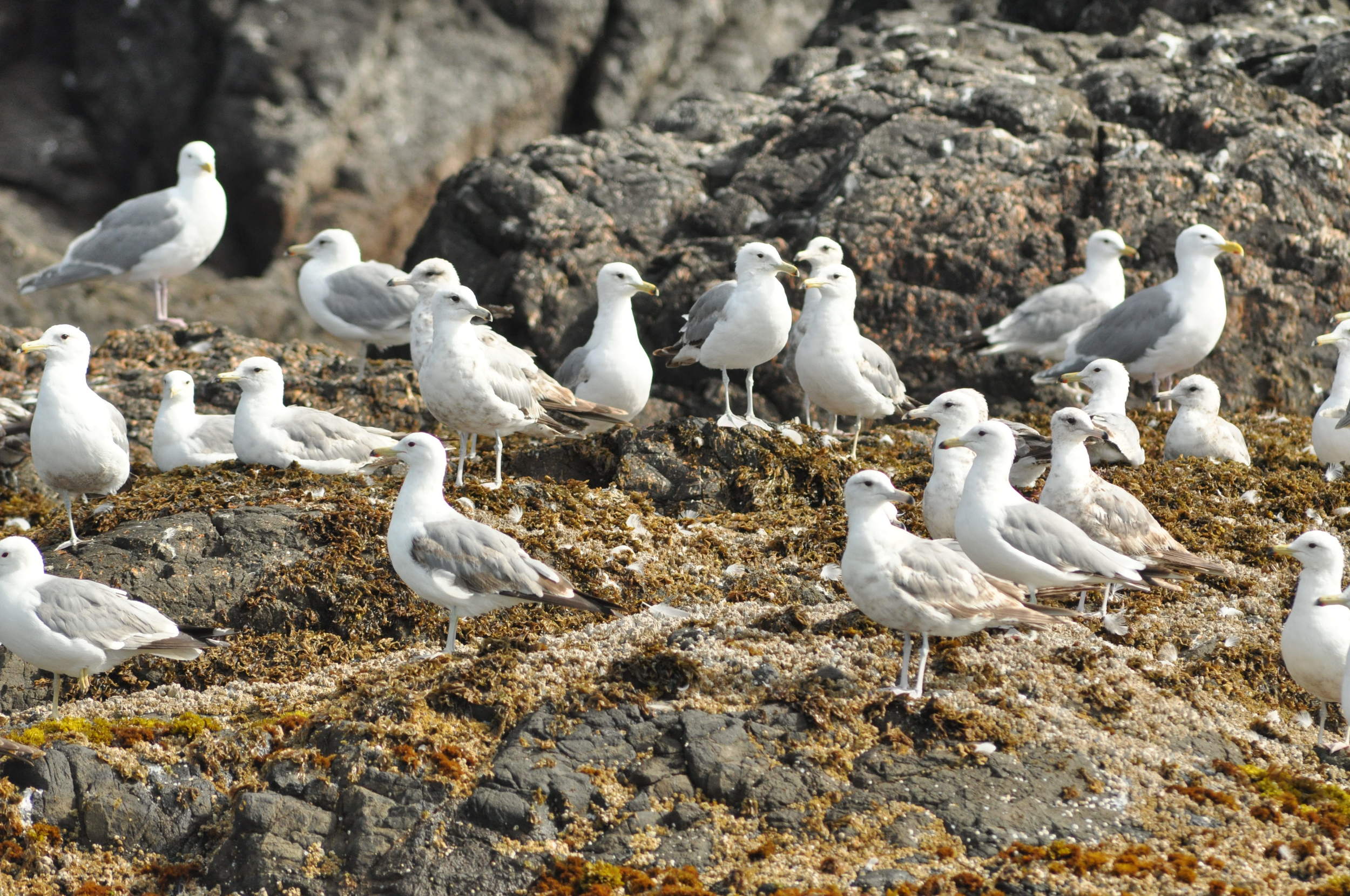The past 2 weeks have been a busy time at the East Limestone Island field camp! We have now wrapped up all Ancient Murrelet monitoring for the year, and we are continuing with wildlife trees and Cassin’s Auklet nestbox monitoring. We are also getting going on some new projects, including invasive plant surveys, and beach debris cleanup.
Volunteer Reflections: Sari
May 27, 2016
My Week with Laskeek!
This most recent blog post is from one of our dedicated volunteers, Sari Raber. She was with our team on East Limestone Island from May 27 - June 3. Here is her creative representation of her time spent with Laskeek Bay Conservation Society!
Meanwhile, on ELI...
With the tasks of camp setup behind us, weeks three and four of the LBCS 2016 field season have seen the continuation of many core projects, as well as the arrival of new visitors to the camp on East Limestone Island (ELI). Monitoring for chicks in Cassin’s Auklet burrows has begun and the season’s first sea surveys have taken place. In addition, the end of the school year marks the beginning of the schools from around Haida Gwaii making their year-end trips to visit ELI and to assist with the Ancient Murrelet monitoring. Here are some project highlights from the past two weeks.
The 2016 Field Season Begins!
After weeks of preparation, the last Friday of April saw two vessels worth of food, equipment, and field crews depart the Queen Charlotte docks bound for Limestone Island and the beginning of the 27th field season for the Laskeek Bay Conservation Society (LBCS). Leading the charge was Captain Jeremie Hyatt, whose sailboat Kode Isle brought volunteer crew member Ryan and Limestone volunteers David, Reina, and Avasouth to Laskeek Bay, mostly under sail. LBCS staff Viv and James departed shortly afterwards in the ELI skiff, and both vessels enjoyed smooth seas and a light northerly wind for the remainder of the voyage. The sunshine and favourable conditions would stick around long enough for the boats to unload and most of camp to be set, but it was not to last. Jeremie and Ryan were set to depart early the next morning, but the rising south-easterlies kept the Kode Isle at anchor and for the time being there were two extra bodies to assist with camp setup.
Ancient Murrelets
The field season this year began earlier than most and extra time was allowed for camp setup. Within a couple of days of arrival, preparation for the first of the major projects had begun: monitoring of Ancient Murrelet chicks. These seabirds lay their eggs in underground burrows, and within days of hatching the chicks wander through the nighttime forest and out to sea where they will spend the coming months learning to feed and survive with their parents. To monitor the numbers and sizes of chicks, a system of short plastic fences is set up to funnel the chicks into central locations – counting stations – and then they are off to sea.





